
Freelancers in 2023

Looking for statistical data on freelancing? We found some interesting ones.
As the service economy continues to grow, more and more workers are abandoning traditional corporate contracts to become self-employed.
But how many freelancers are there? What industries are they working in? And how much do these independent contractors earn on average?
In this overview of the main statistics on freelancing, we will answer these questions and many more.
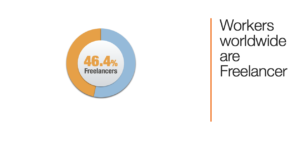
World Bank data shows that 46.4% of all workers worldwide are self-employed
The total number of freelancers is estimated to be 1.57 billion people out of a total global workforce of 3.38 billion
The global freelance market size was estimated at $4.43 billion in 2022 and is expected to reach $12.01 billion by 2028
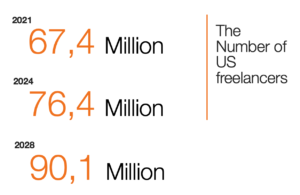
There were 70.4 million freelancers in 2022, up from 67.4 million in 2021.
It is predicted that in 2028, 90.1 million people will be freelancing in the US.
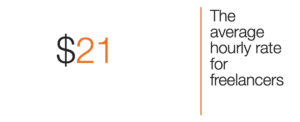
The hourly rate for freelancers averages $21 per hour ($19 per hour in 2018 )
On average, freelancers working in web/mobile development, marketing, legal, accounting and other skilled services earn $28 per hour. This rate is higher than 70% of all hourly wages in the US.
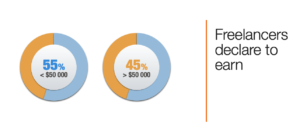
55% of freelance workers earn under $50,000 per year.
42% percent of freelancers said that they earn $50,000 or more
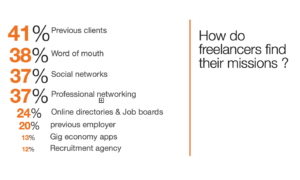
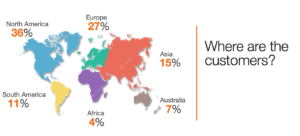
The majority were in North America (36%), while clients in Europe accounted for 27%. The regions with the fewest clients were Australia (7%), the Middle East (5%) and Africa (4%), according to the financial services company Payoneer.
While working remotely removes the geographical barrier, freelancers should still keep in mind that the level of compensation often matches the cost of living in the client’s country.
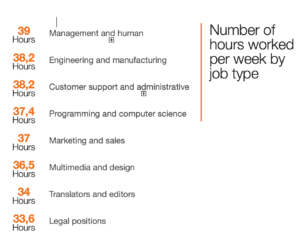
Many freelancers choose to work part-time, some positions require a full-time commitment. Positions requiring the most hours include management (39 hours per week, on average), as well as engineering, manufacturing, customer support and administrative positions (38.2 hours).
The number of hours worked per week varies considerably depending on the freelancer’s area of expertise and the nature of the work (for example, accountants are busier during reporting periods). However, most freelancers track hours comparable to a full-time employee.
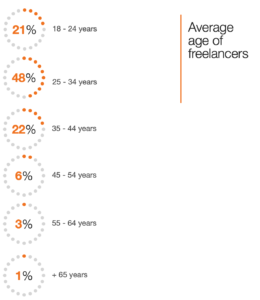
The majority of freelancers are young, with nearly 70% between the ages of 18 and 34 and only 10% over 45.
Freelancers often rely on new technologies to work effectively remotely, which is likely to attract a younger population. Younger workers are also less likely to have established work and personal lives compared to older employees, and therefore may accept and desire more flexible employment.
While younger workers still make up the majority, attitudes toward employment in general are also changing. Fewer and fewer people are staying with the same company for long periods of time, and companies in need of skills are turning to freelancers to fill vacancies.
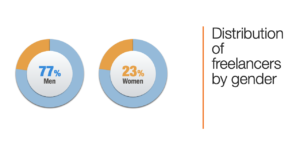
In the U.S., 60% of freelancers identify as men and 40% as women, more equal than the global average, where 77% of freelancers are men and 23% are women.
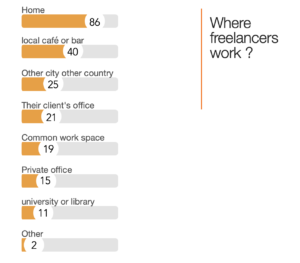
A recent survey found that 86% of freelancers work from home during the week. Coffee shops are also popular, with 40% of respondents working regularly in a coffee shop/bar.
With the rise of digital and technology making this lifestyle possible, 25% of freelancers report working remotely in another country or city. This ability to work from anywhere is a major draw for many freelancers.
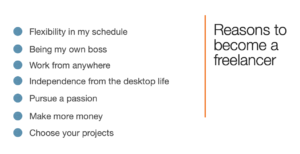
Freelancers were asked about their main reasons for choosing the freelance life. The majority (79%) of full-time freelancers wanted a more flexible schedule, while 77% wanted to be their own boss.
For part-time freelancers, the most popular reason (75%) was to earn more. While financial reasons seem to motivate part-time freelancers, full-time workers seem more focused on improving their work-life balance

Only 1% of independent workers ply their trade in finance.
They may be few, but freelancers who work in finance make an average of $41 per hour compared to programmers who make an average of $25 per hour
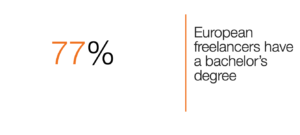
Freelancers in Europe tend to be highly educated. 77% hold a bachelor’s degree or above, and 54% hold a master’s degree. This is significantly higher than the general population, of which less than 40% are university graduates.
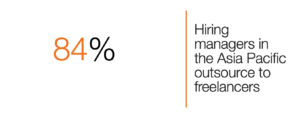
Asia’s freelance economy is growing fast. 84% of hiring managers in the Asia Pacific have outsourced work to freelancers. The same survey found that companies that hire freelancers save 20%+ in labor costs.
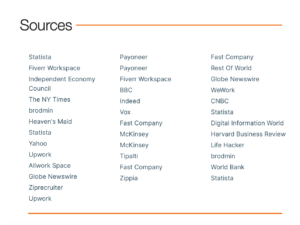
+ There are no comments
Add yours